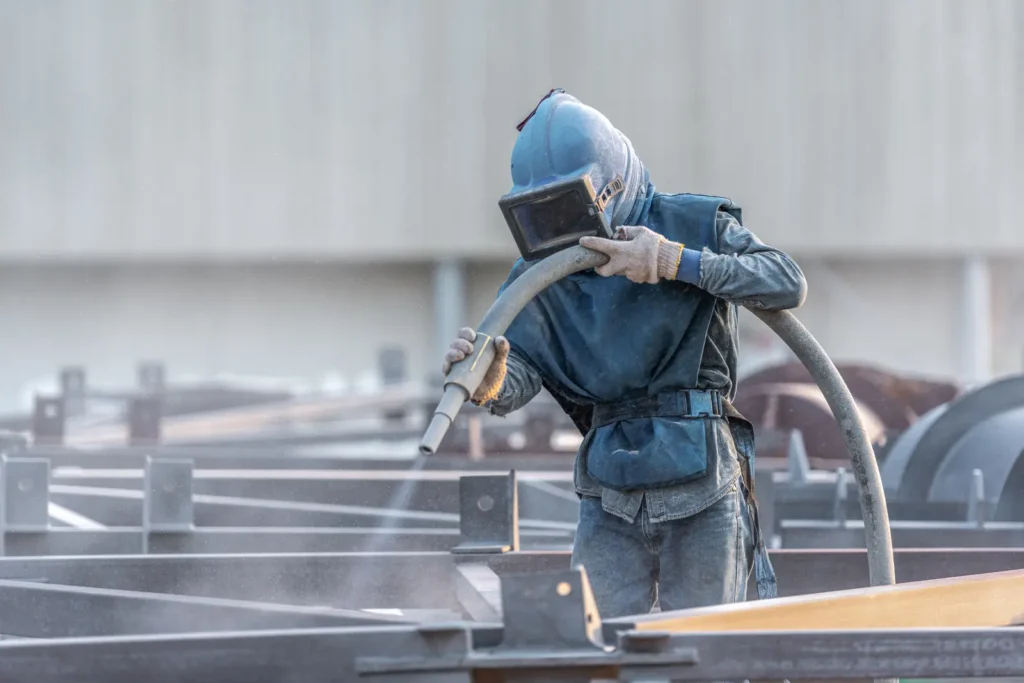Media blasting is fundamental to countless industries for preparing surfaces efficiently and thoroughly. Whether it’s for cleaning, smoothing, or creating a textured profile, this process propels abrasive media at high speeds to rejuvenate a material or ready it for coatings. The evolution of techniques and the diversity of blasting media provide effective solutions regardless of the substrate involved. Among the leading innovations and providers in this space, Airblast Media Blasting stands out for delivering tailored blasting solutions that address both industrial and environmental needs.
Media blasting enhances surface cleaning and substrate quality when done correctly. As coating standards rise, the need for controlled, eco-friendly methods grows. This adaptable technique, essential in sectors such as automotive and construction, requires a careful selection of methods and materials to minimize waste and damage. Keeping abreast of technological developments is crucial for effective media blasting.
Understanding Media Blasting
Media blasting, also known as abrasive blasting, is a process that projects high-velocity abrasive particles against a surface. These particles remove unwanted materials—such as rust, paint, or old coatings—while also creating the desired surface texture. This foundational process ensures proper coating adhesion, prevents material failure, and extends the usable life of many products. The technique can be calibrated by controlling air pressure, media type, and nozzle size, allowing flexibility even when treating sensitive or complex components.
Common Media Blasting Techniques
Several industry-standard techniques define the practice of media blasting, each tailored to specific surface types, environmental standards, or operational constraints:
- Sandblasting: Utilizes silica sand or alternative sands to strip surfaces aggressively. While effective, sandblasting is being phased out in many regions due to health risks linked to silica dust inhalation.
- Dry-Ice Blasting: Employs CO2 pellets that sublimate on contact, eliminating secondary waste while loosening dirt or coatings. It’s ideal for food production, historic restoration, and the cleaning of sensitive electronics.
- Soda Blasting: Relies on sodium bicarbonate, providing a relatively soft abrasive action suited to automotive work or surfaces where preservation of substrate detail is critical.
- Vacuum Blasting: Merges direct blasting with a vacuum, capturing airborne media and debris in real-time. This closed-loop option significantly reduces environmental impact, making it a popular choice for indoor or regulated job sites.
Each method offers distinct advantages, requiring careful evaluation of substrate, desired finish, and regulatory compliance when selecting a blasting approach.
Choosing the Right Blasting Media
Media selection is pivotal to achieving both effective cleaning and the desired finish. Common options include:
- Aluminum Oxide: A high-durability, reusable medium suitable for stubborn materials or when a high degree of surface profiling is required.
- Glass Beads: Offer non-aggressive cleaning, leaving a uniform, satin finish on metals and plastics without measurable material loss.
- Crushed Glass: Delivers sharp, angular edges for fast, heavy-duty cleaning. Its recycled origins and relatively low dust output make it an increasingly popular, sustainable choice.
Additional media—such as steel grit, walnut shells, and plastic abrasives—serve specialized applications, ranging from peening to gentle cleaning of heritage surfaces.
Safety and Environmental Considerations
The high-energy nature of media blasting necessitates rigorous safety compliance:
- Operators must wear prescribed personal protective equipment (PPE), such as respirators, suits, and gloves, to counteract exposure to dust, particulates, and projection hazards.
- Dust control and extraction systems are now required by many regulatory authorities to safeguard air quality on-site and in surrounding communities.
- Environmentally conscious companies increasingly favor low-toxicity, biodegradable, or recyclable blasting media, which helps reduce landfill waste and mitigates waterway contamination.
Applications of Media Blasting
Applications for media blasting span nearly every sector:
- Automotive Restoration: Removing rust and old paint layers restores classic car bodies and frames to bare metal, preparing them for professional refinishing.
- Industrial Equipment Maintenance: Routine cleaning of gears, pumps, and housing extends machinery lifespan and helps prevent unexpected failure.
- Construction: Surface profiling of concrete enhances the adhesion of coatings, whether for epoxy floors, waterproofing membranes, or decorative overlays.
- Marine: Removing antifouling paints and corrosion from hulls is crucial for maintaining marine vessel upkeep and ensuring regulatory compliance.
Employing the correct media and technique ensures both safety and successful outcomes while minimizing downtime and rework.
Conclusion
From restoration and routine maintenance to preparation for advanced finishes, media blasting is indispensable across industries. By understanding the breadth of available techniques, carefully selecting blasting media, and adhering to the highest safety and environmental standards, organizations can optimize efficiency and maintain regulatory compliance. Given the continual evolution of methods and materials, ongoing education and industry monitoring are indispensable for those seeking best-in-class results and sustainable operations.






